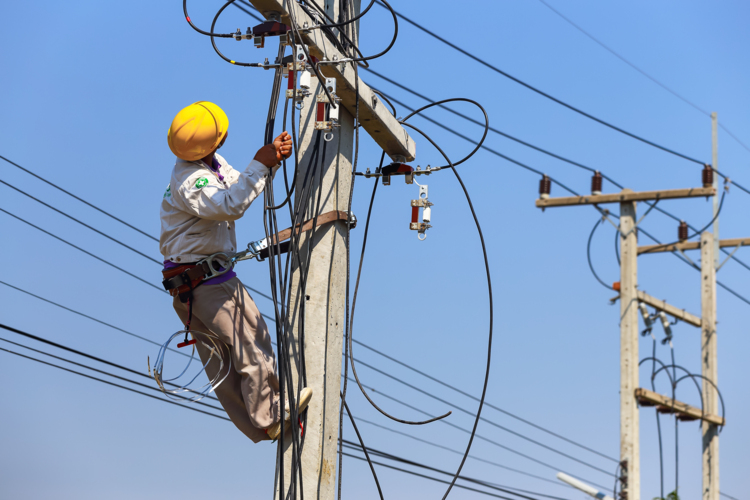The evolution from specialized to general-purpose computing power enables service providers to begin to take advantage of a number of operational and cost efficiencies. CommScope's vCCAP Evo solution help can unlock these advantages.
CommScope's E6000® converged edge router (CER), C100G CMTS and Remote PHY and Remote MACPHY DAA CMTS solutions are trusted by service providers for their stability, scalability, low cost of operation and standards-based interoperability—and they are the basis for our new vCCAP Evo solution.
In part one of this two-part series, we explored how the vCCAP Evo solution helps service providers improve the scalability, flexibility and reliability of their networks. Here, we will look at the cost and operational efficiencies that can be gained as well.
Cost optimization and operational efficiency
Virtual CCAP technology has an inherently lower cost than hardware-based CCAP cores, primarily because widely available, general purpose server hardware is more cost-effective than purpose-built CCAP platforms. Additionally, the greater simplicity of scaling virtual CCAP architectures up or down, combined with the solution’s standardized interoperability, enables operators to combine and seamlessly consolidate multiple virtual CCAP cores on off-the-shelf servers. This flexibility enables operators to leverage the digitization of virtual CCAP to DAA links to consolidate sites into larger data centers with lower cost points.
For example, virtualized operation enables on-demand scaling up by provisioning additional CCAP instances if and when they are needed; transient events can sometimes trigger network-wide spikes in traffic due to a high-profile event or a new software upgrade push for popular mobile devices, and the vCCAP Evo solution can detect these spikes and scale processing capabilities as needed to prevent bottlenecks. Once the spike is has passed, the vCCAP Evo solution then automatically scales back to previous levels, repurposing computing power to other, less time-critical tasks.
The vCCAP Evo solution also enables improved economies of scale and sharing platforms between different access technologies, such as fiber to the home (FTTH), 5G and DOCSIS®. Operators can easily add additional functions to the network at points where they overlap. For example, if there is significant overlap between the functions of a DOCSIS MAC implementation and a virtual Broadband Network Gateway (BNG)—both of which essentially require highly optimized packet processing stacks—the vCCAP Evo solution can mediate between the two functions to support both areas of operation.
The vCCAP Evo solution also helps operators reduce operational costs. While traditional, chassis-based CCAPs incurred significant maintenance and energy costs, the vCCAP Evo solution has a much smaller physical footprint than traditional CCAP deployments, resulting in reduced maintenance and power costs in data centers with optimal access to power and cooling. A vCCAP Evo solution deployment can also eliminate headend space requirements and reduce truck rolls to remote areas of operation which can instead be remotely maintained and upgraded virtually.
Simplified network management and automation
Virtual CCAP management tools centralize and automate a variety of tasks, including the provisioning, configuration and monitoring of devices throughout the network. For example, CommScope’s Domain Manager, which provides advanced domain management for DAA deployments, provides zero-touch and error-free onboarding and configuration of new devices that are introduced into a network, thereby eliminating the risk of human error and any subsequent subscriber issues that may result. These types of automated capabilities can greatly simplify the working lives of an operator’s engineering team, allowing them to focus on more advanced tasks like rolling out new services to increase ARPU or leveraging AI technologies to reduce costs.
CommScope’s vCCAP Evo solution also greatly streamlines the process of integrating new services into a network. In a virtual CCAP, such integration is achieved via software-defined networking (SDN) and network function virtualization (NFV) capabilities, which greatly simplify the integration process since they are effectively microservice and/or cloud-native integration projects. They are much easier to manage than adding major new features to CCAP platforms running monolithic SW stacks.
Built to evolve, simplify and economize
Virtual CCAP is an ideal solution for economizing headend operation, integrating new network technologies such as DAA and Node PON, and achieving greater agility and scalability across a network. While CommScope’s vCCAP Evo solution leverages the best operational features of its legacy C100G and E6000 platforms, it is more efficient, cost-effective and flexible than traditional, hardware-based CMTS architectures—making vCCAP Evo the ideal solution for managing and optimizing the performance of today’s evolving network technologies.
CommScope offers a full, end-to-end portfolio of next-generation products and solutions for both inside and outside plant operation. For further information about the CommScope vCCAP Evo, visit our website or contact your CommScope Sales Representative.
© 2025 CommScope, LLC. All rights reserved. CommScope and the CommScope logo are registered trademarks of CommScope and/or its affiliates in the U.S. and other countries. For additional trademark information see https://www.commscope.com/trademarks. DOCSIS is a trademark of Cable Television Laboratories, Inc. All product names, trademarks and registered trademarks are property of their respective owners.









